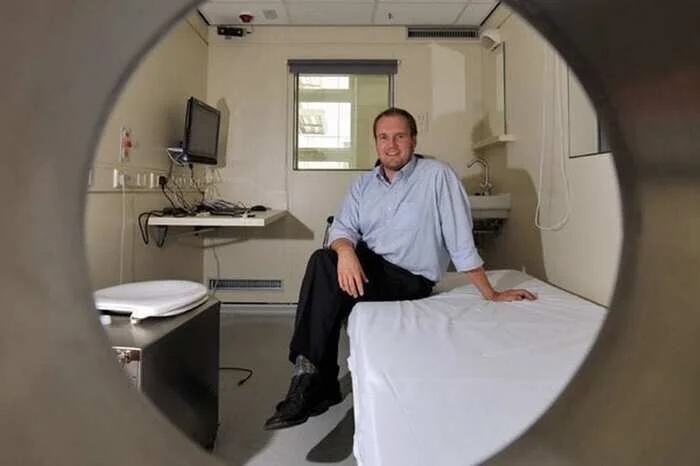more customizable laptops with separate modules

Over the past few years, the maintainability of many types of devices has declined to a minimum. Many smartphones, laptops and accessories for them simply cannot be repaired – everything is filled with glue and pressed in the body so much that it is either impossible to disassemble and assemble all this, or it is extremely difficult. In addition, such elements as the processor, RAM, video module and even internal memory are now soldered on the motherboard, so that only a professional repairman of the highest standard with specialized equipment can replace them.
But it seems that the situation is gradually changing – some companies are turning to supporters of the right to face repair, developing partially or completely modular devices, which can be repaired with one screwdriver and minimal skills in handling electronic devices. Under the cut – details about three modular and 100% repairable devices of the last time.
Luna PC by Dell

The first is the Luna PC concept project from Dell. Conceptual – because the device has not yet gone into circulation. There are one or more engineering designs, and that’s it. The developers decided to create a repairable device, in which almost any important element can be replaced even by a user who is not very familiar with electronics repair. To increase the level of maintainability, the creators of this project have provided a modular structure where the screen, keyboard, battery can be easily removed and replaced.
We can say that there are a lot of such laptops. In general, everything is so, but modern devices are created in such a way that only a specialist of the service center could repair them in the event of a breakdown. In addition, to carry out work here you only need a Phillips screwdriver – and nothing else.
The creators of the device have also tried to use recyclable materials to create the laptop. These are, for example, aluminum, from which the body is made, special plastic and other materials. But that’s not all, the laptop has other advantages:
• The motherboard is about 75% smaller than that of a regular laptop. It takes 20% less resources to make it. Well, the carbon footprint is half that.
• The motherboard is quite far apart from the battery and is placed in the best cooling area.
• There are no coolers, passive cooling is used, which increases the autonomy of the device – the battery lasts for a longer period.
• The battery here is advanced – it is designed to last several years.
• To access the insides of the device, you just need to unscrew several identical screws. As mentioned above, this requires only one Phillips screwdriver. According to the developers, the device has 10 times fewer screws than the Dell Latitude 7300 Anniversary Edition.
• The keyboard is easy to separate from the laptop and replace.
According to the company, in order to completely disassemble the device, it will take only a few tens of minutes. Perhaps in the future, the company will release a real prototype based on this concept.
In general, the company is on the right track. It is not known whether the management thought about the release of such devices for a long time or the company decided to take decisive steps after the US Congress decided to legally allow “the right to repair.” Still, progress in terms of creating maintainable devices is evident. Most likely, competitors will take an example with Dell and soon other large projects will offer their own modular or at least DIY-repairable laptops.
Modular laptops are a very interesting topic, but we have other articles, check it out – we are talking about:
Framework Laptop

We recently wrote about this laptop, here is it
full overview
… I am glad that the project continues to work and develop. Moreover, it went on sale, the device is actively shipped to customers, about which the caring geeks sometimes had doubts. But now they are gone – the promises were fulfilled, and the modular device really became available in the summer. Moreover, the creators of the project also launched a marketplace of modules – now there is a whole ecosystem of various add-ons and upgrades.

Almost everything in the device can be changed – except for the processor, which is still soldered on the board. But this, it seems, will soon be corrected – however, the developers are not of this model, but of the one described below. With this laptop and without replacing the processor, everything is fine – you can also repair it with one screwdriver and a couple of tweezers (although you can do without them).
In addition to the usual modules, there are additional ones that are connected to the motherboard using a USB-C connector.

As for the characteristics, the laptop, of course, is not a gaming laptop, but it is quite suitable for solving everyday work tasks. The laptop has three configurations – from basic to performance. The price, of course, is also very different. In the first case, we get a device with an Intel Core i5 processor (core frequency up to 4.2 GHz), 8 GB of RAM and 256 GB SSD, in the second, that is, a productive version, i7 is already installed, 16 GB of memory and 512 GB SSD , in the third, “Pro” version, we get an i7 Pro processor, 1 TB SSD and 32 GB of RAM. Cost – $ 650, $ 749 and $ 999, respectively.
The laptop is assembled and disassembled using a Phillips screwdriver, almost everything is replaced, including ports and connectors, screen, battery, wireless chip, motherboard, RAM, keyboard, screen hinges, etc. Plus, there are additional modules that are connected to the motherboard using a USB-C connector. Here is a list of modules available in the company’s marketplace:
• USB-C port
• Card reader
• Slot with additional memory of 250 GB
• Slot with additional memory of 1 TB
• HDMI
• Display Port
• USB-A
MNT Reform

This laptop is called the “laptop for the paranoid.” The fact is that it is designed in such a way that it turns out to be an almost ideal device for those who are worried about the safety of their own data, including not only corporate data, but also personal data. The laptop does not have cameras, microphones, WiFi can be turned off. If necessary, personal data can be stored on an SD card. There is also hard disk encryption with LUKS.
The advantage of the device is also the fact that it is an open laptop that can be modified as you like, replace broken modules or replace outdated components with more productive / functional ones.
The system is open, it can be modified as you like. Particularly noteworthy is the battery, which consists of removable 18650 cells, 12 Ah / 3.2 V. They are enough for about 5 hours of operation. If the autonomy is reduced, it is enough to replace the problem battery and that’s it, there are no more problems.
But we wrote about this here, and now there is new information. The fact is that the developers are adding the ability to replace the processor module, moreover, in a couple of months, support for the Raspberry Pi will be provided.
As for the processor, the corresponding modules are already ready, these are not just words. A few days ago, the developers talked about new features for device owners.
Adapters for processors have been developed, which after a certain time will go on sale and will be available in the laptop marketplace. When exactly this will happen is still unknown, but there are already engineering samples of adapters.
The development of adapters for “raspberries” is in the process, but it will not take long – according to the developers, soon these modules will also be available for purchase.
Probably, this particular laptop will eventually become the most modular and maintainable. In any case, I would like to hope so.
As a conclusion, we can say that now not only small startups, but also large companies like Dell are working on projects of modular devices with a high degree of maintainability, so, as mentioned above, new interesting projects can be expected in six months or a year. This seems to be an emerging trend, which clearly appeared for a reason. Perhaps, the pressure of regulators in different countries supporting the “right to repair” has had its influence. Or maybe the desire of users to have gadgets that can be considered completely their own, with the possibility of repair or modification.
I would like to hope that this trend from so far weak and barely noticeable will be transformed into a new direction in the work of vendors of electronic devices.






